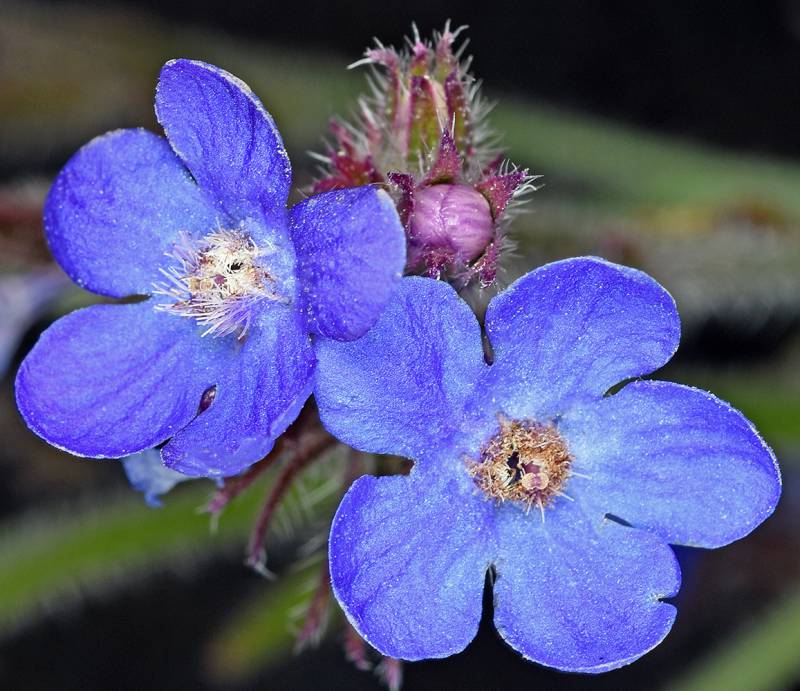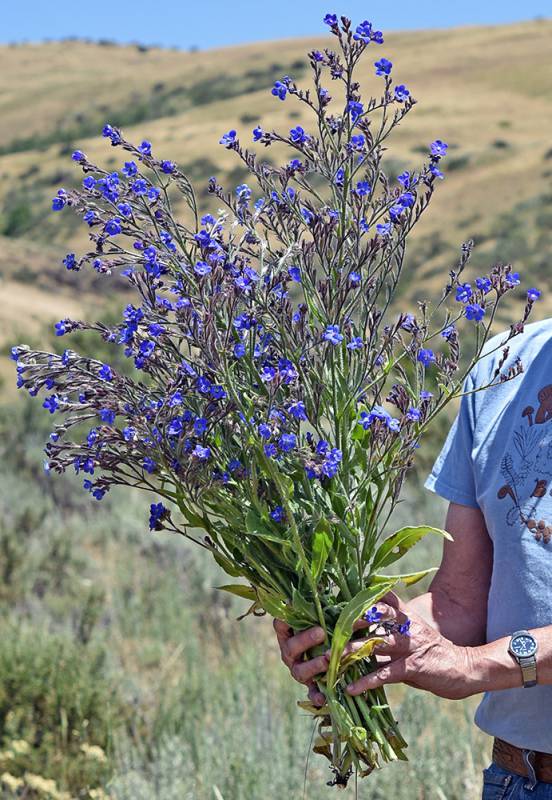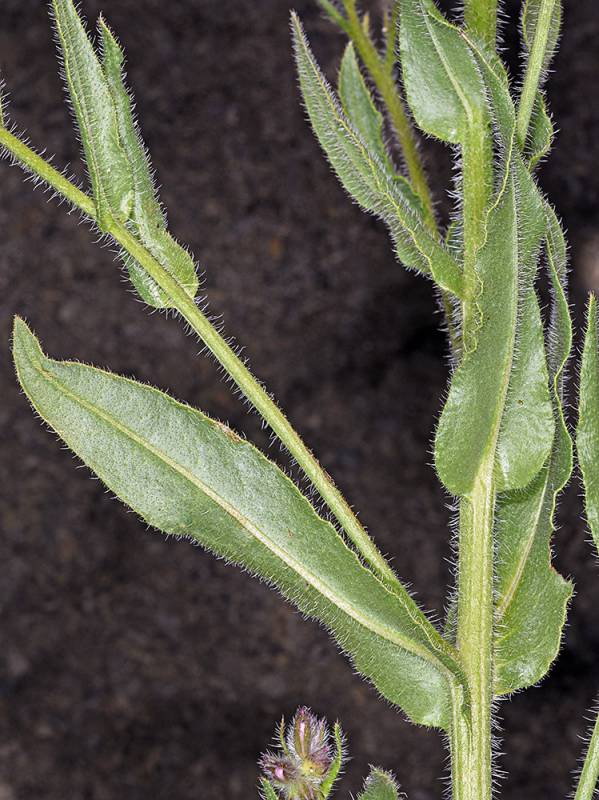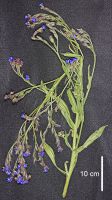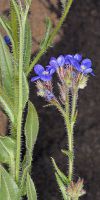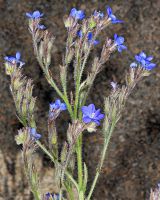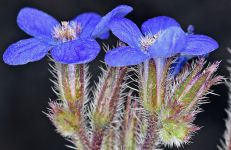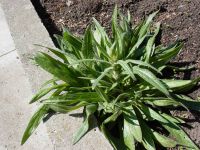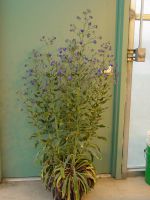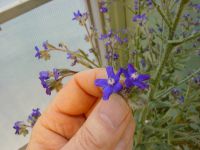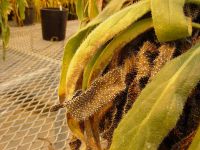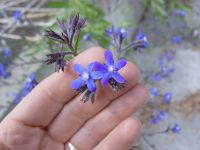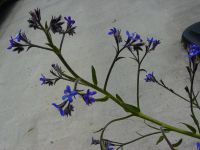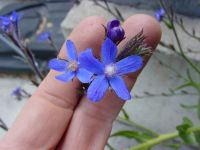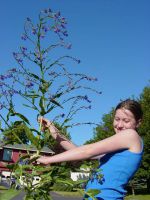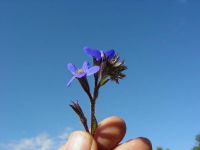Distribution: Occurring in scattered localities on both sides of the Cascades crest in Washington; British Columbia to California, scattered localities east to the Atlantic Coast.
Habitat: Disturbed soil.
Flowers: June-August
Origin: Introduced from Eurasia
Growth Duration: Perennial
Conservation Status: Not of concern
Pollination: Bees, flies
Tap-rooted, perennial herbs, usually single-stemmed, the stems 4-15 dm. tall, with spreading, pungent hairs throughout.
Basal leaves oblanceolate, petiolate; cauline leaves lanceolate to oblong, sessile and often clasping, up to 30 cm. long and 8 cm. wide.
Inflorescence a terminal, bracteate, false raceme, the bracts narrow, the pedicels erect; calyx 8-10 mm. long, cleft to well below he middle, the 5 lobes slender; corolla showy, funnel-shaped, blue, the limb 12-20 mm. wide, the 5 rounded lobes spreading; the 5 filaments attached near the top of the corolla tube, the anthers extending into the corolla throat; nutlets with a stipe-like base that fits into a pit in the receptacle, the base surrounded by a thickened rim.
Nutlets 4, erect, 5-9 mm. high and half as thick, coarsely ridged.
Publication: Gard. Dict., ed. 8. n. 9. 1768.
- var. azurea – Italian alkanet, Italian bugloss Occurring in scattered localities on both sides of the Cascades crest in Washington; British Columbia to California, scattered localities east to the Atlantic Coast.
PNW Herbaria: Specimen records of Anchusa azurea in the Consortium of Pacific Northwest Herbaria database
WA Flora Checklist: Anchusa azurea checklist entry
OregonFlora: Anchusa azurea information
E-Flora BC: Anchusa azurea atlas page
CalPhotos: Anchusa azurea photos

